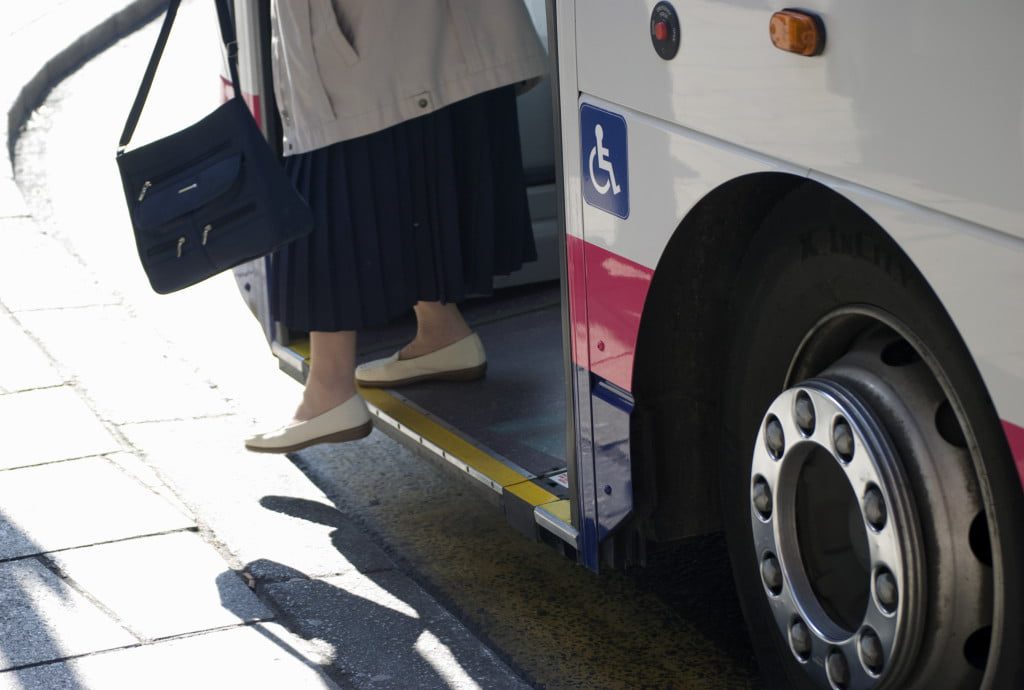
Finding ways to get around can be challenging at the best of times.
In most cases, people get around by driving but this becomes less viable as an option as people age. Often, this can come as a shock because you don’t truly realize how much you rely on driving until it is no longer an option. Because of these factors, many seniors are unwilling to give up driving, even when driving puts themselves and other people at risk.
This is a major issue for the elderly as they often have many medical appointments that they need to keep.
Yet, as people age, their ability to drive themselves decreases and sooner or later, most elderly have to rely on other forms of transportation.
This loss of independence can be devastating, but finding reliable alternatives can offer people some sense of control over their own lives.
Often, caregivers choose to give their elderly relatives rides themselves, but this isn’t always an option. Doing so can also be draining for the caregiver and gives them less time for the things they need to do.
Alternatives include public transport, taxis, and services like Uber. Yet, these aren’t always viable and come with their own challenges. For example, some ethnic minority and immigrant seniors may find public transport confusing, while low income seniors mightn’t be able to afford a taxi.
Poverty is a Transportation Barrier
One of the first big issues when it comes to transportation is income. This affects transport options in a surprising number of ways.
The Price of Services
Many of the transport services available cost to some degree or another, and this can create significant challenges for low income families. Additionally, being of low income limits the use of some common transport services, such as taxis, as the cost involved is simply too high.
Other seniors may be able to afford taxis or Uber rides, but only every so often. If so, they might only use these on special occasions.
This is a problem too, as transport isn’t just about the important events, like seeing a doctor or buying groceries. It’s also crucial for seeing friends, going to the movies, and visiting a park. Those little experiences help people feel connected others and to life, promoting mental health in the process.
Fewer Resources
A lack of disposable income makes it much less likely that there will be access to a reliable car and less likely that the elderly person or the caregiver will have a driver’s license.
The issue of limited resources may also extend to others in the senior’s family and neighborhood. This leads to even fewer transport options.
The Impact of Low Income Neighborhoods
Poor neighborhoods are also more likely to be dangerous, meaning that it will be less safe for the elderly to walk and take public transportation or use other elderly transport services if a ride isn’t available.
Additionally, transport networks are more common and expansive in affluent neighborhoods. Less attention is often paid to poor neighborhoods, which further limits options for residents.
Intersections Between Minority Groups, Poverty, and Other Challenges
Elderly ethnic minority and immigrants are more likely to be victims of crime, unsafe drivers, along with unsafe environmental factors including pothole and cracks in sidewalks and streets.
Ethnic immigrant and immigrant elderly are particularly vulnerable to socioeconomic characteristics that make transportation more difficult.
These include limited ability to speak English, chronic health conditions, living alone and the long-term impacts of isolation.
Ethnic Differences in Transportation
The National Household Travel Survey concluded that ethnic minority seniors living in urban areas have far lower mobility rates than the general population.
We know that the African American and Hispanic elderly differ substantially from non-Hispanic Whites, frequently living in overcrowded or isolated living arrangements. They also often experience higher disability rates, less education, more acute health conditions, and earn less income.
Ethnic minority and immigrant elderly are more likely to be poor than non-Hispanic whites. African Americans are also more likely than whites to stop driving as they grow older.
Language barriers can make issues even worse. In particular, first-generation and recently immigrated seniors are more likely to speak a second language at home, rather than English. This can contribute to a limited proficiency in English, especially for seniors who are relatively isolated.
Those issues with proficiency can make it difficult for seniors to read and interpret bus routes and instructions, which can be complex. At the same time, the limited proficiency in English can make it harder for the seniors to ask bus drivers or other passengers for information.
Lack of Transportation is Unhealthy

Not having access to safe, affordable transportation has been proven to be detrimental to the health of the elderly.
Lack of transportation can be a barrier to receiving necessary mental and physical health services.
Elderly with transportation limitations will be less likely to participate in nutritional and exercise programs and other programs designed to maintain health.
They are also less likely to be socially active with their family and friends, a fundamental need for all healthy people.
On the other hand, when the elderly have access to safe, affordable transportation, they are more likely to participate in programs promoting health and take advantage of mental and physical health services.
They are also more likely to be social regularly, enhancing mental and emotional health.
Those with access to safe, affordable transportation are also less likely to require in-home care, a frequently unaffordable reality for ethnic minority and immigrant families.
The Government Offers Some Solutions
For some elderly people, the best solutions will come from government programs, and the government does support a number of elderly transport services.
Medicaid, for example, will cover medical transportation, including non-emergency trips to the doctor.
Make sure to research your state’s particular policies – individual states have discretion as to who is eligible.
Medicare will cover emergency trips to the hospital, but again, do your research because there are some restrictions and coverage is determined on a case-by-case basis.
Some insurance companies are considering making transportation an insurable cost, so carefully review the health insurance policies available to you.
Some states and cities also offer discount public transportation passes for the elderly.
21st Century Transportation Options
Rideshare Services
The technology revolution has also provided some solutions for elderly care that are potentially helpful. Driver services like Uber and Lyft are great examples of this.
They work like a traditional taxi service, except you can order the ride straight from your smartphone. It will tell you exactly who your driver is, how much it will cost, how long it will take to be picked up, and how long it will take to get to your destination.
There are many upsides to these services. One area is the safety aspect. Everything is tracked by both companies through GPS tracking on your phone and the driver’s phone.
They’re also extremely convenient, especially for an immediate ride. The downside is that for low-income people rides from these kinds services can add up to be expensive if taken regularly.
Delivery Apps
These days, you can get almost anything delivered to your door for a fee. This includes cooked meals, alcohol, flowers, subscription boxes, and countless other things.
Meal deliveries work well for many seniors. That includes low cost options like Meals on Wheels and higher quality ones like Silver Cuisine.
You can also consider meal kits. These provide all the ingredients and instructions for cooking meals, often with some of the prep work already done. This way, seniors can still cook for themselves, without the stress of shopping and meal planning.
Grocery delivery is an option too. Some grocery stores offer this as a service or you can use an independent company like Instacart.
Getting groceries delivered is powerful for seniors who mostly get around by walking, biking, or public transport. Those approaches are frustrating if you have a large amount of food to bring home.
Local Services
You may also be able to find local services, such as small companies or individuals that offer transport at a low price. These may be run through a local senior center or simply through an entrepreneurial person in your area.
If there isn’t anything available, try advertising.
For example, when I was caregiving, I advertised for a driver to take me grocery shopping once per week. Doing so ended up costing me much less than a taxi, was convenient, and resulted in a new friendship.
Final Thoughts
Transport is challenging for many seniors and even more so for those from minority groups. However, there are potential solutions out there, including services like Uber and having transport subsidized through Medicaid or Medicare.
You’ll often need to be a little creative. So, instead of looking for a single service that solves the senior’s needs, you might need a few different services for different situations.
Try asking local senior centers as well. They might know about other programs you can turn to or have advice about solving current transport challenges.

The Multicultural Guide to Caregiving
Multicultural Guide to Caregiving is an essential resource for balancing cultural expectations around elder care, without losing your mind or money in the process.
Feeling Overwhelmed?
Check out our Caregiving Consulting service for personalized support and guidance.

Leave a Reply